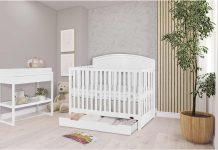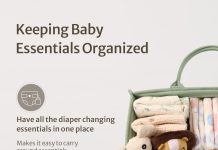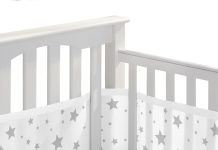Are you a parent who is looking for a creative way to repurpose your child’s crib as they grow older? Look no further! In this article, we will explore the exciting possibilities of adapting a crib into a daybed for older kids. Discover the simple yet effective techniques that will transform your child’s sleeping space into a stylish and functional daybed, perfect for lounging and relaxing during the day. Say goodbye to the hassle of purchasing new furniture and say hello to a smart and economical solution that will keep both you and your child happy. So, let’s get started on this exciting journey of transforming your child’s crib into a fabulous daybed!
Review contents
Choosing the Right Crib
When it comes to choosing the right crib that can be adapted into a daybed for older kids, there are a few key factors to consider. One of the most important considerations is the convertibility options that the crib offers. Look for a crib that can easily transition from a crib to a daybed without the need for additional purchase of conversion kits or accessories.
Additionally, sturdy construction is crucial to ensure the safety and durability of the crib. Opt for cribs made from high-quality materials such as solid wood that can withstand the wear and tear of an older child. Pay attention to the craftsmanship and ensure that the crib has a strong and stable foundation.
Another vital aspect of choosing the right crib is ensuring that it meets safety standards. Look for cribs that comply with safety regulations and have been certified by reputable organizations. Safety features such as slat spacing, rounded corners, and sturdy hardware are essential to keep your child safe while using the daybed.
Preparing the Crib for Conversion
Once you have chosen the perfect crib that can be adapted into a daybed, it’s time to prepare it for conversion. The first step is to remove the front rail of the crib, which is typically done by unscrewing a few bolts or latches. Make sure to carefully follow the manufacturer’s instructions to ensure a smooth and safe conversion process.
After removing the front rail, you’ll need to adjust the mattress height. Lowering the mattress to the lowest setting ensures that the daybed is at an appropriate height for your child’s age and height. This adjustment can usually be done by repositioning the mattress support board within the crib.
While preparing the crib for conversion, it’s important to check for any loose parts or components. Tighten all the screws and bolts to ensure that everything is secure and stable. Additionally, inspect the crib for any signs of wear or damage that may affect the safety and functionality of the daybed.
Adding Safety Features
To enhance the safety of the converted daybed, there are a few additional features that can be added. One of the most common safety features is installing a guardrail. A guardrail provides a physical barrier on one side of the daybed, preventing your child from rolling off during sleep.
Another option is to use bed rails or a toddler bed conversion kit. These accessories can be attached to the edges of the daybed, providing extra security and preventing your child from accidentally falling out of bed. Bed rails and conversion kits come in various designs and styles, so choose one that suits your child’s needs and preferences.
Enhancing Comfort and Style
Besides safety, it’s important to consider the comfort and style of the daybed. Start by selecting a suitable mattress that provides adequate support for your child’s growing body. Look for mattresses made specifically for toddler or young children, as they offer the right firmness and support for their developing bones and muscles.
Once you have chosen the mattress, it’s time to select age-appropriate bedding. Look for bedding sets that are comfortable, durable, and easy to clean. Consider your child’s favorite colors or themes and involve them in the decision-making process to make their daybed a cozy and inviting space.
To personalize the daybed, you can add decorative elements such as throw pillows, stuffed animals, or wall decals. Let your child choose their favorite decorations and allow them to express their unique personality and style. This personal touch will make the daybed feel like their own special space.
Creating a Play Area
In addition to being a place for sleep, a daybed can also serve as a play area. To create a playful atmosphere, consider adding a tent or canopy to the daybed. This not only adds a fun element but also provides a sense of privacy and coziness for your child. Choose a tent or canopy that complements the overall theme or style of the room.
To maximize storage space and keep the room organized, incorporate storage solutions into the daybed. You can add baskets, bins, or shelves underneath the daybed to store toys, books, and other essentials. This not only keeps the room tidy but also encourages your child to take responsibility for their belongings.
To make the daybed area more visually appealing, incorporate decorative elements such as wall art, fairy lights, or playful curtains. These simple additions can transform the daybed into a magical and inviting space for your child to play and relax.
Optimizing Space
If you’re dealing with limited space in your child’s room, converting the crib into a daybed can help optimize the available space. One option is to consider loft bed conversion. By raising the daybed off the ground, you can create additional space underneath for a desk, play area, or storage.
Utilizing underbed storage is another great way to optimize space. Whether it’s built-in drawers or rolling storage bins, utilizing the space under the daybed can help keep the room clutter-free and provide extra storage for toys, clothes, or bedding.
When arranging the furniture in the room, it’s important to create a functional layout that promotes a sense of space and ease of movement. Consider the placement of the daybed, play area, storage solutions, and other furniture to ensure that the room feels balanced and organized.
Promoting Independence
As your child grows older, it’s important to promote their independence and involve them in various aspects of their room. One way to do this is by teaching them safety guidelines related to their daybed. Show them how to climb in and out of bed safely and discuss the importance of not jumping on or off the daybed.
Encouraging a daily bed-making routine can also help instill a sense of responsibility and independence in your child. Teach them how to arrange the pillows and sheets neatly, and make it a fun activity that they can take pride in. This routine will not only keep the daybed tidy but also teach them valuable life skills.
Involve your child in the room decoration process. Ask for their input and let them choose aspects such as paint colors, wall decals, or accessories. By allowing them to make decisions and express their creativity, you’re encouraging their independence and ownership of their personal space.
Maintaining the Daybed
To ensure that the daybed remains safe, comfortable, and attractive, regular maintenance is crucial. Regularly check for any signs of wear and tear such as loose screws, frayed edges, or chipped paint. Fix any issues promptly and replace any damaged parts to maintain the integrity of the daybed.
Keeping the bed clean and fresh is also important for the overall hygiene and comfort of the daybed. Wash the bedding regularly and vacuum or sweep underneath the daybed to remove any dust or debris. Additionally, consider using mattress protectors to prolong the lifespan of the mattress.
Follow the manufacturer’s guidelines for cleaning and care to ensure that you’re using the appropriate methods and products. Different materials may require different cleaning techniques, so it’s important to follow the instructions provided by the manufacturer to avoid damaging the daybed.
Transitioning to a Regular Bed
Eventually, your child will outgrow the daybed and it will be time to transition them to a regular bed. This transition should be done gradually, to give your child time to adjust to the new sleeping arrangement.
Start by removing any safety features such as guardrails or bed rails slowly. This allows your child to get used to the open space and sleep without any physical barriers. Monitor your child during this period to ensure their safety and adjust the transition pace to their comfort level.
Discuss and explain the change to your child before the transition. Talk about how they are growing up and how a regular bed is the next step in their development. Make it a positive and exciting experience for them, emphasizing the new opportunities and responsibilities that come with a big kid bed.
During the transition, provide emotional support to your child. Some children may feel anxious or uneasy about the change, so reassure them that you’re there for them and that the transition is a natural part of growing up. Offer comfort, encouragement, and praise throughout the process.
Conclusion
Choosing the right crib that can be adapted into a daybed for older kids is an essential step in creating a safe and comfortable sleeping environment. Consider the convertibility options, sturdy construction, and adherence to safety standards when selecting a crib.
Preparing the crib for conversion involves removing the front rail, adjusting the mattress height, and checking for loose parts or wear and tear. Adding safety features such as guardrails or bed rails enhances the safety of the daybed.
Enhancing comfort and style can be achieved by choosing a suitable mattress, selecting age-appropriate bedding, and personalizing the daybed with decorative elements. Creating a play area with a tent or canopy, incorporating storage solutions, and adding decorative elements can make the daybed a fun and inviting space for your child.
Optimizing space in a room can be done through loft bed conversion, utilizing underbed storage, and creating a functional layout. Promoting independence involves teaching your child safety guidelines, encouraging a daily bed-making routine, and involving them in room decoration decisions.
Maintaining the daybed requires regularly checking for wear and tear, keeping the bed clean and fresh, and following manufacturer guidelines. Transitioning to a regular bed should be done gradually, with the removal of safety features, discussions with your child, and providing emotional support.
By following these guidelines, you can successfully adapt a crib into a daybed for older kids, creating a safe, comfortable, and inviting sleeping space for your child’s growing needs.






























